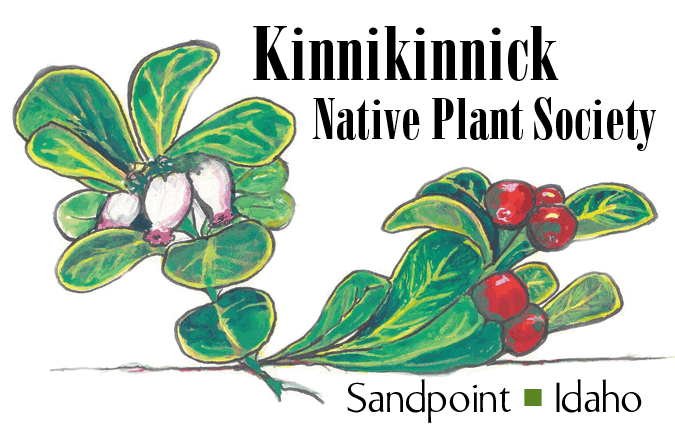Miner's Lettuce
(Claytonia perfoliata)
Miner’s Lettuce
Miner's Lettuce (Claytonia perfoliata) and Heartleaf Springbeauty (Claytonia cardifolia) form rich green groundcovers sprinkled with small, white 5-petaled flowers. These members of the genus Claytonia thrive in shady soils along streambanks and in moist open meadows, blooming from April through mid-summer.
Easily distinguished by their leaf arrangement, both have two opposite leaves at the base of a delicate flower stalk, but the Miner's Lettuce leaves join to form a shallow cone, encircling the flower stalk. The leaves of Heartleaf Springbeauty remain distinctively separate and are – as the name says – heart shaped.
Spring Beauty
Miners in the early camps, far from kitchen gardens and grocery stores, used Miner's Lettuce as a salad and cooking green. Early white settlers and Native Americans partook as well. Similar in taste and chemical composition to baby spinach, Miner's Lettuce can be eaten raw or cooked. It is also a good source of vitamin C and was used to prevent or cure scurvy. Other common names for this species are Indian lettuce and winter purslane.
A prolific seed producer, Miner's Lettuce germinates in profusion after a fire. The rapid new growth provides food for flocking bird species like the mourning dove and western meadowlark. As the leaves age, or with more sun exposure, they turn reddish in color.
As early spring wildflowers emerge in the woodlands keep an eye out for Heartleaf Springbeauy. The lush green heart-shaped leaves and early flowers are a boon to pollinators like bumblebees, attracted by the five pink-tipped stamens in each flower. Planted in your landscape, Heartleaf Springbeauty creates a showy groundcover in moist, shady areas blooming consistently throughout the summer.
Look for Heartleaf Springbeauty in the Moist Forest habitat at the North Idaho Native Plant Arboretum. Open to the public, parking for the Arboretum is at 611 S. Ella Ave., Sandpoint, ID, or on the street. Miner's-lettuce is not listed as an established plant in the Arboretum but it is common in the surrounding wild.
Miner’s lettuce and Heartleaf Springbeauty are found on pages 169 and 170 of the KNPS publication, Landscaping with Native Plants in the Idaho Panhandle, available at local bookstores and the Bonner County History Museum. Native Plant Notes are created by the Kinnikinnick Native Plant Society. To learn more about KNPS and the North Idaho Native Plant Arboretum, explore www.nativeplantsociety.org.


